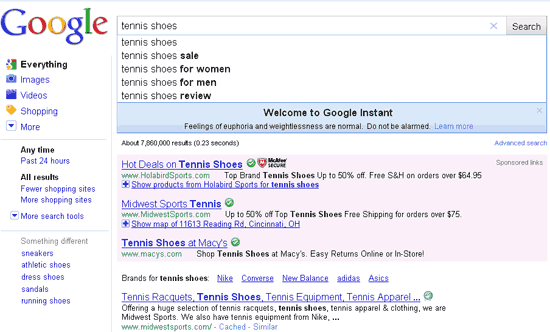 Keeping with the theme of my previous article on Mobile Commerce, I recently read a number of news items that bring to light even more, the big opportunity there is in moving toward a mobile marketplace. I wanted to summarize the findings for you below.
Keeping with the theme of my previous article on Mobile Commerce, I recently read a number of news items that bring to light even more, the big opportunity there is in moving toward a mobile marketplace. I wanted to summarize the findings for you below.
Mobile Users Prefer Mobile Web Over Mobile Apps
Mobile commerce (a.k.a M-Commerce) is such a rapidly growing segment I wanted to follow up my previous post with more on what is going on in this industry segment.
eMarketer recently released data that detailed a poll by Keynote Systems for Adobe. The poll results revealed that although the rage is on mobile ‘apps’ more consumers prefer mobile browsers to access the majority of mobile content. The only segments that preferred to download an app to access the internet over using a browser were those that related to games, music, or social media (i.e. Facebook, Twitter, etc…)
When it came to the retail category, the data showed that nearly all shopping tasks listed had those polled overwhelmingly preferring the use of mobile access for each task. From price and product comparison shopping to sharing the finds socially, most of the mobile users preferred using a browser rather than a dedicated app for navigating.
On the contrary, although mobile consumers did say they prefer the mobile browser to the mobile app for a number of shopping tasks, they also indicated they preferred using the non-mobile version of the website to actually shop when ready. When asked why this was the case, the respondents suggested a “low awareness of optimized experiences for the mobile web” (i.e. many sites are not easy to navigate when viewed on a mobile device—quite likely because the stores have not invested in a mobile version. I touched upon this very concept in my last article.
When asked, the vice president of ecommerce at Kenneth Cole Productions, Tom Davis, said “this year we expect to put our toe in the water, but we expect sales driven by mobile devices to be bigger than some of our brick-and-mortar stores.”
PayPal Unveils Mobile Express Checkout
On a similar note, PayPal recently unveiled its two-click mobile payment system called Mobile Express Checkout. They have been working on this for sometime, and now it’s ready for ‘live’ BETA testing.
With this new system, PayPal feels they have found a viable solution to a long standing problem—that being finding a balance between security and ease of use among mobile users and apps. So far the BETA testers have reported very promising results even going so far as showing double digit sales growth from their mobile stores since implementing the feature. By early 2011, PayPal plans to give Mobile Checkout Express merchants the ability to not only accept PayPal payments, but accept credit cards as well.
Here is an example of how it could be used by retailers. One of PayPal’s initial partners, Starbucks, is going to make it easy for customers to reload their Starbucks card from within the company’s iPhone app.
Mobile is as Prevalent as TV
In another report by ABI Research, it is reported that 5 billion of the world’s 6.7 billion people have active subscriptions to mobile devices. This is an astonishing fact that further shows mobile devices are as common as the television set.
ABI further reports that with the introduction of high-speed 4G data technologies, subscription growth rates should stay strong even in regions which are considered ‘hyper-saturated”. In fact, by 2015, it is expected that 6.4 billion people will have mobile subscriptions and at that time, 169 million of them will be to 4G technologies.
With the rapid growth of this technology and its usage rates, mobile marketers have enormous opportunity in front of them now and on the horizon.
 With all the talk of iPhones, apps, Blackberry’s and like minded ‘smart devices’, at some point (if you haven’t already) you need to consider when it is right to make the jump to mobile commerce. These technologies are more prevalent than ever before, and the rate of use is growing with what seems like every passing hour. Add to that the fact that mobile shopping is expected to approach $2 billion in 2010 — and top $119 billion by 2015 — and you have the makings of something that can add substantial revenue to your bottom line in the near future.
With all the talk of iPhones, apps, Blackberry’s and like minded ‘smart devices’, at some point (if you haven’t already) you need to consider when it is right to make the jump to mobile commerce. These technologies are more prevalent than ever before, and the rate of use is growing with what seems like every passing hour. Add to that the fact that mobile shopping is expected to approach $2 billion in 2010 — and top $119 billion by 2015 — and you have the makings of something that can add substantial revenue to your bottom line in the near future. 
